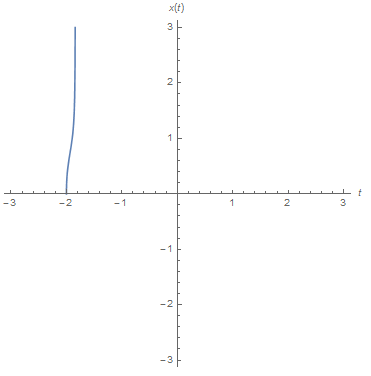In DIFFERENTIAL EQUATION SOLVING WITH DSOLVE by D. Kapadia, there is a Chini differential equation :
sol = DSolve[x'[t] == 5 x[t]^4 + 3 x[t]^(-4/3), x[t], t]
The answer implies RootSum. The question is how to use and plot the solution. I have tried
Plot[x[t] /. sol /. {C[1] -> 2}, {t, 0, 10}]
which doesn't works and used Evaluate and/or Normal and/or ToRadical@Normal both on x[t] and on sol. But nothing works. Moreover, this case is not documented in the documentation "Plotting the Solution".
Need help; Thanks




N[x[10] /. sol /. {C[1] -> 2}], what do you get? $\endgroup$Plot[]. $\endgroup$solinInputForm? $\endgroup$